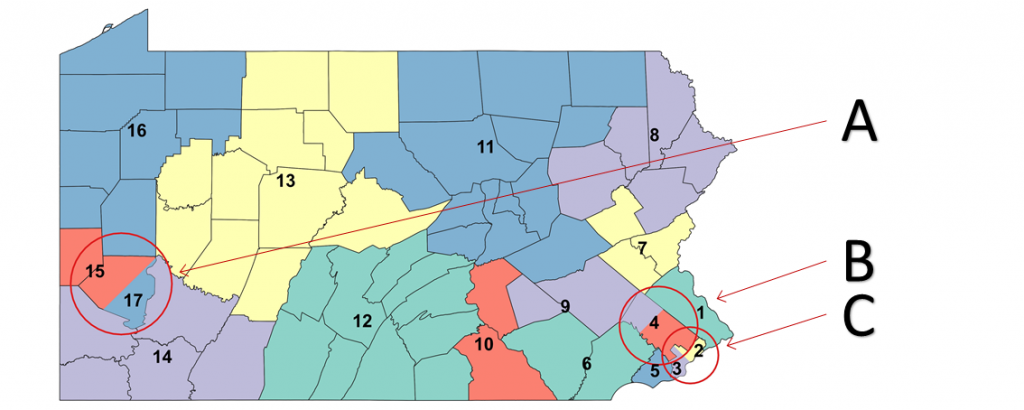Methodology
Summary of Our Step-By-Step Method for Non-Partisan Redistricting
A 5-step method readily creates electoral district maps meeting transparency and fairness criteria. The method applies a judicially enforceable standard that reduces the risk of legal disputes.
Step 1. Divide the state into roughly equal population districts using the largest political subdivision in the first instance.
A.) For political units with a population larger than one district, first create as many (compact) whole districts as possible within the political unit, and then add the remaining unused territory as a single piece to a neighboring district.
B.) Assemble entire lower-population political units into compact districts.

At this step, assign each of the 67 Pennsylvania counties to one of 17 congressional districts. Each district must include a resident population of 764,865 persons (less one each in 5 of the districts). Populations will only approximate the target.
Note three special cases:
A Allegheny County (blue and red segments) with a 2020 population of 1,250,578 persons, can host one complete district and part of a second.
B Montgomery County (red and purple segments) with a 2020 population of 856,553 persons, can host one complete district and part of a second.
C Philadelphia County (purple and yellow segments) with a 2020 population of 1,603,797 persons, can host two complete districts and part of a third.
%20(2).jpg)